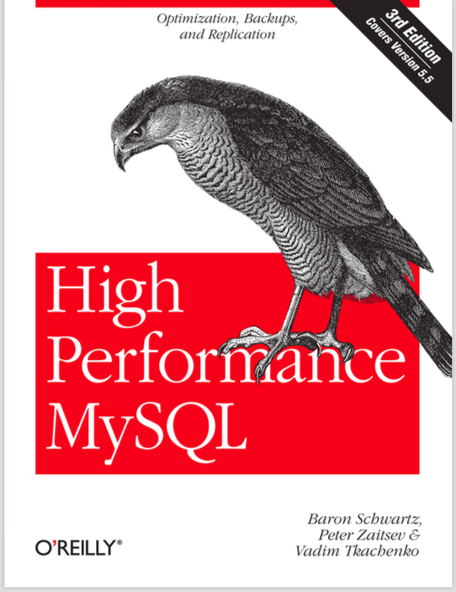Book review - High Performance MySQL
Info

- Pages: 2025
- Author: Baron Schwartz, Peter Zaitsev, Vadim Tkachenko
- Publisher: O'Reilly
Review:
High Performance MySQL is a great book which talk not only about MySQL, but also database in general. It shows you the ways to make your MySQL database more performance, and help you understand why and how it can be more performance in those ways. Along the way, it explains a lot of database concepts, which helps understanding other databases as well.
However, some of the information in the book is outdated (the third version only covers up to MySQL 5.5), so you should probably check your current version manual to make sure about some MySQL functionality.
Table of contents:
Note:
- Normal text: can be skipped
- Italic text: should at least skim through
- Bold text: should read carefully
-
Preface: This part is about the overview of the book, you can skim through it to get an idea of what this book is about.
-
Chapter 1 - MySQL architecture: This is an important chapter, as the title say, it talks a about what MySQL architecture is. It also talks about some concepts in MySQL like concurrency, locks, transaction, isolation level and storage engines. I think these information are great if you want to understand other database systems as well.
-
Chapter 2 - Finding Bottlenecks: Benchmarking and Profiling: talks about Benchmarking and Profiling strategies and tools. It shows some insights about benchmarking and profiling in general, and the ideas can apply anywhere, not just for MySQL database. This part is not critical, but if you have time, you should at least skim through it.
-
Chapter 3 - Schema Optimization and Indexing: talks about the most important topic of database optimization - indexing. It describes how MySQL implements several types of index and how to use them correctly with your application requirement.
-
Chapter 4 - Query Performance Optimization: describes how the query optimizer works. It also mentions several techniques to structure your query and schema to help the optimizer optimize your query better.
-
Chapter 5 - Advance MySQL features: as the name, talks about advance features in MySQL, which includes Query Cache, Views, Charset, Full-text search, Store Proceduces, …
-
Chapter 6 - Optimizing Server Setting: shows how MySQL settings can affect your query performance, and how to optimize them. Most of these requires that you have a good set of benchmark for your database, so you should read Chapter 2 before this.
-
Chapter 7 - Operating System and Hardware Optimization: Unless you need to install MySQL in a separate machine instead of using RDS (or Aurora), you probably don’t need this chapter. However, it’s still worth reading just in case you ever need to optimize those settings.
-
Chapter 8 - Replication: Another important topic for maintaining a database system. Aside from replicating with MySQL, the book also describes how to replicate the whole filesystem or server, which is sometimes easier and simpler.
-
Chapter 9 - Scaling and High Availability: discusses several techniques to scale: scale up, scale out, partition, sharing, load balance, …
-
Chapter 10 - Application-level Optimization: explains in-depth about caching, as well as discussing about other techniques such as compression, trimming down unused modules, …
-
Chapter 11 - Backup and Recovery: as I never administrates any systems, I never know about how important backup and recovery are. A take away from this chapter: always have backup and recovery process, test them regularly.
-
Chapter 12 - Security: talks about how MySQL handles permissions and priviliges of users. It also discusses some bad practices that should be avoided when setting up MySQL permissions.
-
Chapter 13 - MySQL Server status: shows a lot of information about the metrics we can get when monitoring MySQL Server.
-
Chapter 14 - Tools for high performance: shows several tools for maintaining MySQL system. Personally, I think the list is pretty outdated and we can find better alternatives on the internet.
-
Apendix A - Transfering Large Files
-
Apendix B - Using EXPLAIN
-
Apendix C - Using Sphinx with MySQL
-
Apendix D - Debugging Locks